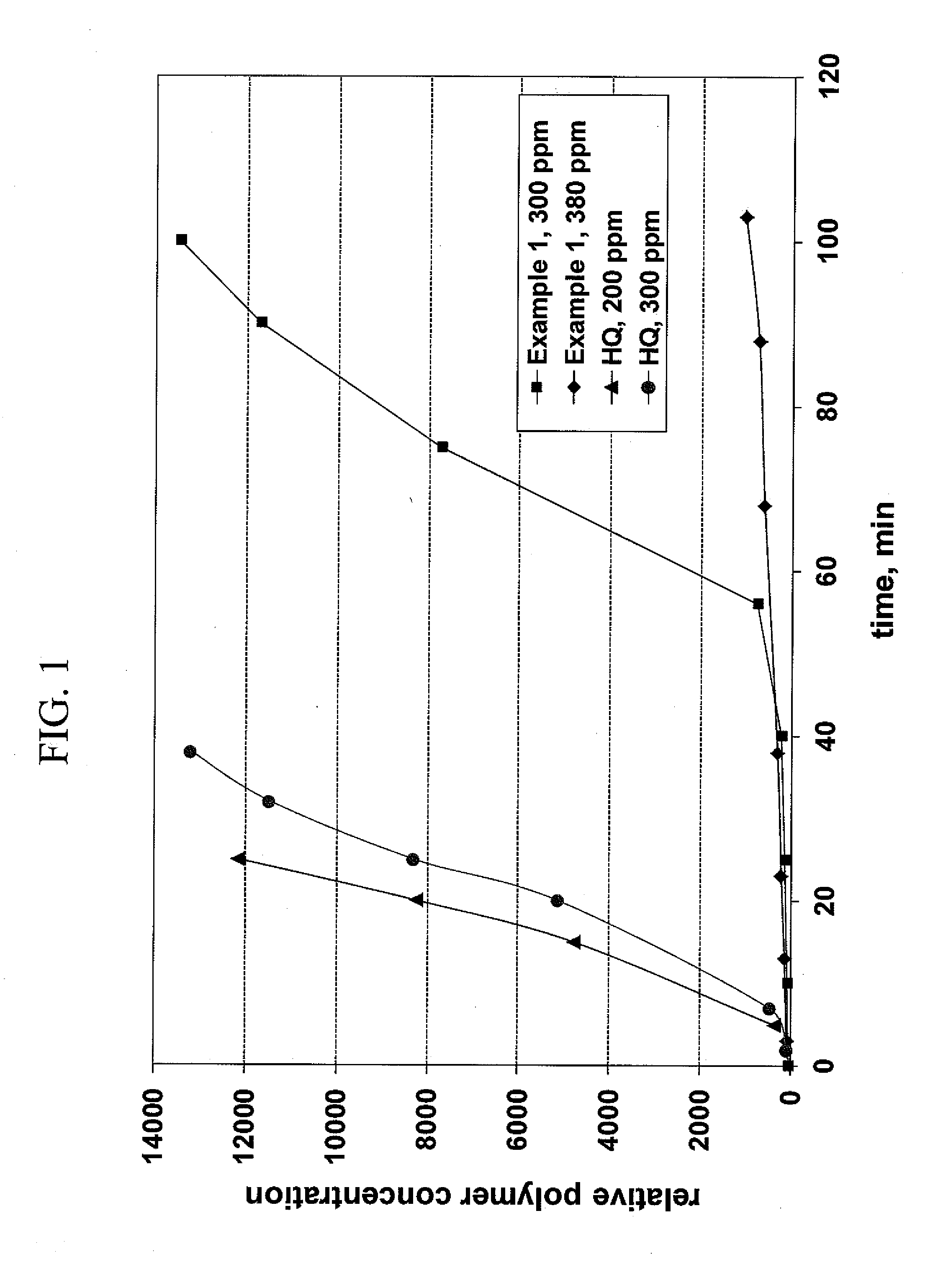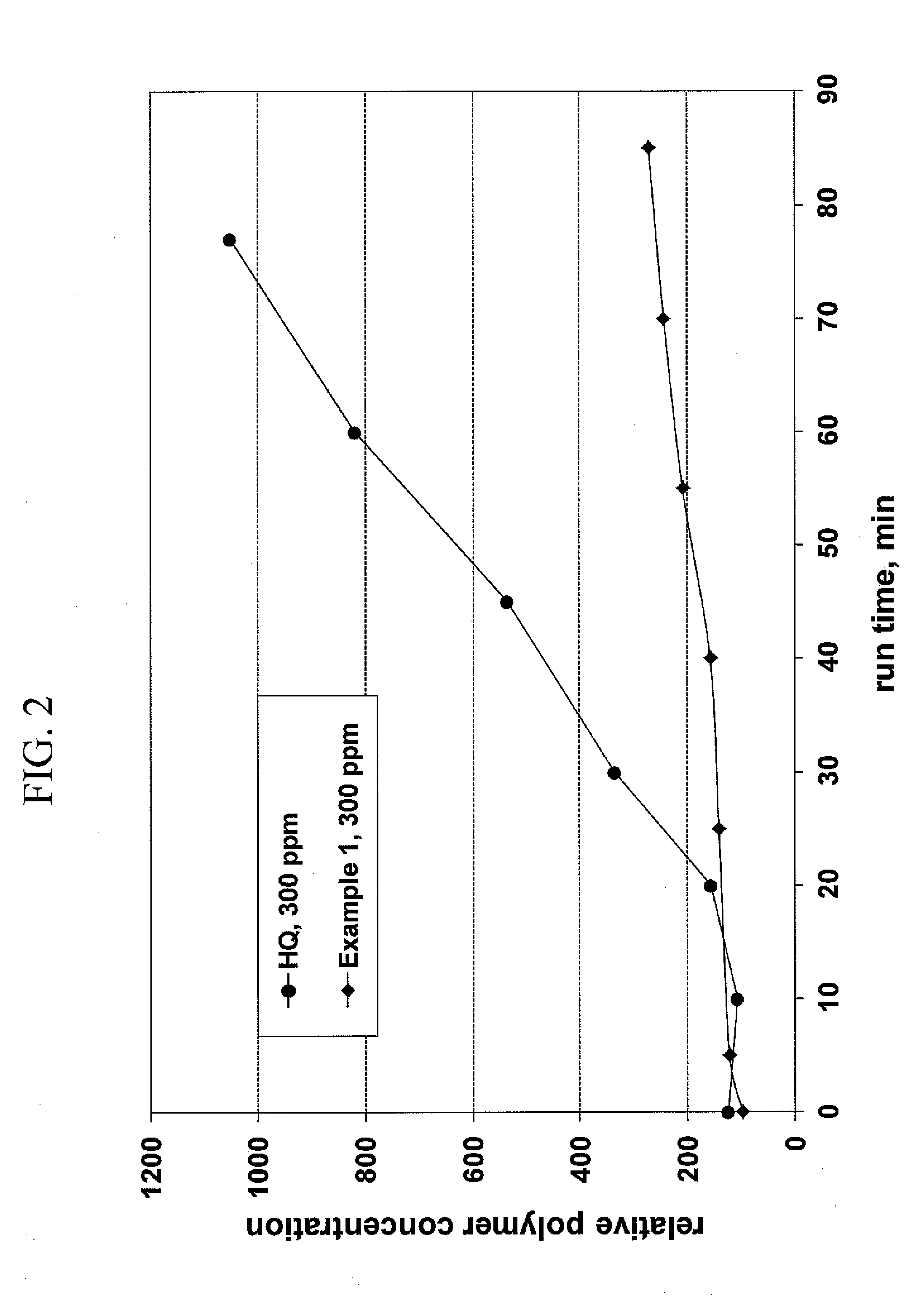Multi-component polymerization inhibitors for ethylenically unsaturated monomers
a polymerization inhibitor and ethylene technology, applied in the direction of thickeners, organic chemistry, lubricant composition, etc., can solve the problems of unwanted polymerization reactions, and rapid consumption of inhibitors previously added, and achieve the effect of inhibiting the polymerization of acrylonitril
- Summary
- Abstract
- Description
- Claims
- Application Information
AI Technical Summary
Benefits of technology
Problems solved by technology
Method used
Image
Examples
example 1
Preparation of an Inhibitor Composition
[0060]An example inhibitor composition was prepared. HTMPO was dissolved in a solvent consisting of water, ether, and glycol. DEHA was then added into the solution. A discoloration was observed as the reaction between HTMPO and DEHA progressed. At the end of this reaction, compositional analysis confirmed the conversion of HTMPO to HTMPO hydroxylamine and the formation of a nitrone from DEHA. HQ was then added and dissolved with stirring. This composition was ready for use as an inhibitor product.
example 2
Inhibitor Performance Test with Uninhibited Acrylonitrile
[0061]The performance of the above generated inhibitor composition was evaluated using a laboratory scale continuous flow distillation column. In this laboratory setup, the column consisted of a three-neck flask representing the column sump and reboiler, an insertion assembly with perforated metal plates representing the distillation column tray section, and a condenser representing the overhead condenser to provide distillation reflux. A feed pump provided the column feed, and an outlet purge pump maintained the liquid level in the sump. Heating was provided via a heating mantle to the flask contents.
[0062]Commercial grade acrylonitrile was purchased from Sigma-Aldrich (99+% pure, inhibited with 35-45 ppm MEHQ). Uninhibited acrylonitrile was obtained by removing the MEHQ. Benzoyl peroxide (BPO) (Aldrich, 97%) was employed as the polymerization initiator for the experiments.
[0063]Four individually treated runs were compared in...
example 3
Inhibitor Performance Test with the Presence of Acetic Acid, Water and Air in Uninhibited Acrylonitrile
[0064]The data shown in FIG. 2 was collected using the same apparatus as in Example 2, except that acetic acid, water and air were introduced in the distillation column, to simulate the distillation operation in the Heads or Drying column of an industrial acrylonitrile manufacture process. FIG. 2 shows that in the presence of water, acetic acid, and air the HQ retarded acrylonitrile polymerization, while the Example 1 composition inhibited the polymerization up to 40 minutes and is mostly effective after 85 minutes have elapsed.
PUM
| Property | Measurement | Unit |
|---|---|---|
| compositions | aaaaa | aaaaa |
| mechanical | aaaaa | aaaaa |
| fouling | aaaaa | aaaaa |
Abstract
Description
Claims
Application Information
 Login to View More
Login to View More - R&D
- Intellectual Property
- Life Sciences
- Materials
- Tech Scout
- Unparalleled Data Quality
- Higher Quality Content
- 60% Fewer Hallucinations
Browse by: Latest US Patents, China's latest patents, Technical Efficacy Thesaurus, Application Domain, Technology Topic, Popular Technical Reports.
© 2025 PatSnap. All rights reserved.Legal|Privacy policy|Modern Slavery Act Transparency Statement|Sitemap|About US| Contact US: help@patsnap.com


